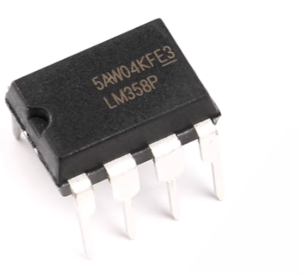Introduction to LM358P
The LM358P is a popular dual operational amplifier (op-amp) integrated circuit (IC) widely used in various analog electronics applications. Known for its versatility, low power consumption, and ease of use, the LM358P is ideal for signal conditioning, filtering, and amplification tasks. This guide will provide an overview of the LM358P, its key features, setup, and common applications.
Key Features of LM358P
The LM358P op-amp offers several features that make it suitable for a wide range of applications:
- Dual Op-Amps: The IC contains two independent high-gain op-amps in a single package.
- Wide Power Supply Range: It operates on a single power supply voltage range from 3V to 32V or dual supplies from ±1.5V to ±16V.
- Basso consumo energetico: The LM358P is designed for low power consumption, making it suitable for battery-operated devices.
- Wide Bandwidth: It offers a wide bandwidth of 1 MHz, providing good performance for various applications.
- High Gain: The op-amps provide a high gain, allowing for effective signal amplification.
- Low Input Offset Voltage: This feature minimizes the need for external adjustment.

Setting Up the LM358P
Setting up the LM358P for your application involves selecting the appropriate components and understanding the basic connections. Here’s a step-by-step guide:
- Power Supply: Connect the Vcc pin to your positive power supply and the Vee/GND pin to the ground. Ensure the supply voltage is within the recommended range.
- Input Connections: Connect your input signal to the non-inverting (+) and inverting (-) inputs of the op-amps. Use the appropriate configuration (e.g., inverting, non-inverting, differential) based on your application.
- Feedback Resistors: Add feedback resistors between the output and the inverting input to set the gain of the amplifier.
- Output Connections: Connect the output pin to your load or the next stage in your circuit.
Applications of LM358P
The LM358P is widely used in various applications due to its versatility and performance. Some common applications include:
- Signal Amplification: Used to amplify small signals in audio, sensor interfacing, and other analog circuits.
- Filtri attivi: Implement low-pass, high-pass, band-pass, and band-stop filters for signal conditioning.
- Oscillators: Create sine, square, and triangular wave oscillators for waveform generation.
- Comparators: Use the op-amps as comparators in analog-to-digital conversion and threshold detection circuits.
- Voltage Followers: Implement buffer circuits to isolate stages and improve signal integrity.
Risoluzione dei problemi comuni
When working with the LM358P, you may encounter some common issues. Here are a few troubleshooting tips:
- No Output Signal: Check power supply connections and ensure the op-amp is powered correctly. Verify input signal and feedback connections.
- Distorted Output: Ensure the input signal is within the linear range of the op-amp and check for proper biasing.
- Oscillations: Add bypass capacitors near the power supply pins to reduce noise and stabilize the op-amp.
- Incorrect Gain: Verify the values of the feedback resistors and ensure they are correctly connected.
Conclusione
The LM358P dual operational amplifier is a versatile and reliable component for a wide range of analog electronics applications. Its ease of use, low power consumption, and high performance make it an excellent choice for both beginners and experienced engineers. By following this guide, you can effectively utilize the LM358P in your projects.
Clicca qui per effettuare una richiesta o acquistare.
FAQ
Q1: What is the supply voltage range for the LM358P? A1: The LM358P operates on a single supply voltage range from 3V to 32V or dual supplies from ±1.5V to ±16V.
Q2: Can the LM358P be used in battery-powered applications? A2: Yes, the LM358P is designed for low power consumption, making it suitable for battery-powered applications.
Q3: What is the bandwidth of the LM358P? A3: The LM358P offers a bandwidth of 1 MHz.
Q4: How do I set the gain of an amplifier using the LM358P? A4: The gain is set using feedback resistors connected between the output and the inverting input. The gain can be calculated based on the values of these resistors.
Q5: Can the LM358P be used as a comparator? A5: Yes, the LM358P can be used as a comparator, but dedicated comparator ICs might offer better performance for certain applications.
